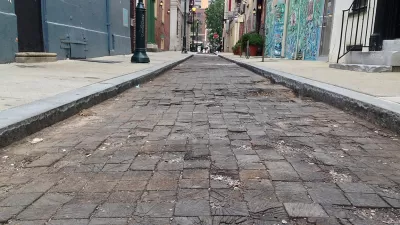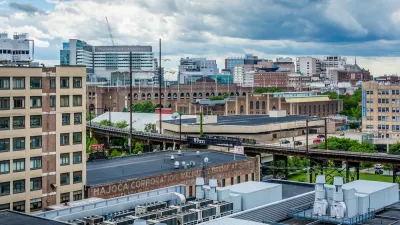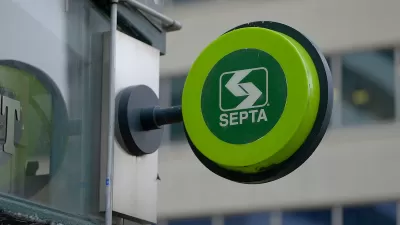A failed 2012 restoration of South Camac, meant to last five years, only made it until 2015. Now it will have to wait until 2017 to see the historic street paved in wood again.

Mimi Kirk reports on the complicated and unique history of South Camac, "one of those old, narrow Philadelphia streets with buildings that hug the sidewalk so closely they seem to spill onto it," which until last year was also "the only restored wood-paved street in Philadelphia."
Kirk details the history of South Camac as a wood-paved street, which extends back to 1917, when the collection of art and literary clubs that lined the street wanted to dampen the sound of passing horses by paving the street with wood rather than cobblestone.
A 2012 restoration of the wood paving, however, failed, when the wood quickly rotted and popped out of place. The entire street was then "embalmed" in asphalt in 2015, to use the words chosen for the headline of an article by Inga Saffron. Kirk picks up the story in the present day, with an update from Philadelphia's Streets Department about how they intend to avoid these mistakes when they once again restore the street to wood paving in 2017.
FULL STORY: Rebuilding One of America's Last Wood-Paved Streets

Manufactured Crisis: Losing the Nation’s Largest Source of Unsubsidized Affordable Housing
Manufactured housing communities have long been an affordable housing option for millions of people living in the U.S., but that affordability is disappearing rapidly. How did we get here?

Americans May Be Stuck — But Why?
Americans are moving a lot less than they once did, and that is a problem. While Yoni Applebaum, in his highly-publicized article Stuck, gets the reasons badly wrong, it's still important to ask: why are we moving so much less than before?

Using Old Oil and Gas Wells for Green Energy Storage
Penn State researchers have found that repurposing abandoned oil and gas wells for geothermal-assisted compressed-air energy storage can boost efficiency, reduce environmental risks, and support clean energy and job transitions.

Updating LA’s Tree Rules Could Bring More Shade to Underserved Neighborhoods
A new USC study finds that relaxing Los Angeles’ outdated tree planting guidelines could significantly expand urban tree canopy and reduce shade disparities in lower-income neighborhoods, though infrastructure investments are also needed.

California's Canal Solar Projects Aim to Conserve Resources and Expand Clean Energy
California’s Project Nexus has begun generating electricity from solar panels installed over irrigation canals, with researchers and state agencies exploring statewide expansion to conserve water and boost clean energy production.

HHS Staff Cuts Gut Energy Assistance Program
The full staff of a federal program that distributes heating and cooling assistance for low-income families was laid off, jeopardizing the program’s operations.
Urban Design for Planners 1: Software Tools
This six-course series explores essential urban design concepts using open source software and equips planners with the tools they need to participate fully in the urban design process.
Planning for Universal Design
Learn the tools for implementing Universal Design in planning regulations.
Heyer Gruel & Associates PA
City of Moreno Valley
Institute for Housing and Urban Development Studies (IHS)
City of Grandview
Harvard GSD Executive Education
Salt Lake City
NYU Wagner Graduate School of Public Service
City of Cambridge, Maryland





























